Diocletian’s Palace, known as a huge roman complex in Split, is one of the best preserved roman buildings from the late antiquity.
As a local from Split (Croatia), I walked its streets million times. Diocletian’s Palace, located in town center was always the most interesting part of it. Starting from my childhood, this wonderful building drew my attention. Therefore, I explored it for a long time. Consequently, this palace made me fall in love in history.
Exploration of Diocletian’s Palace
I think that exploration of Diocletian’s Palace in Split will be interesting to you as well dear traveler! Hence, I am writing this blog post to bring it closer to you in the finest way
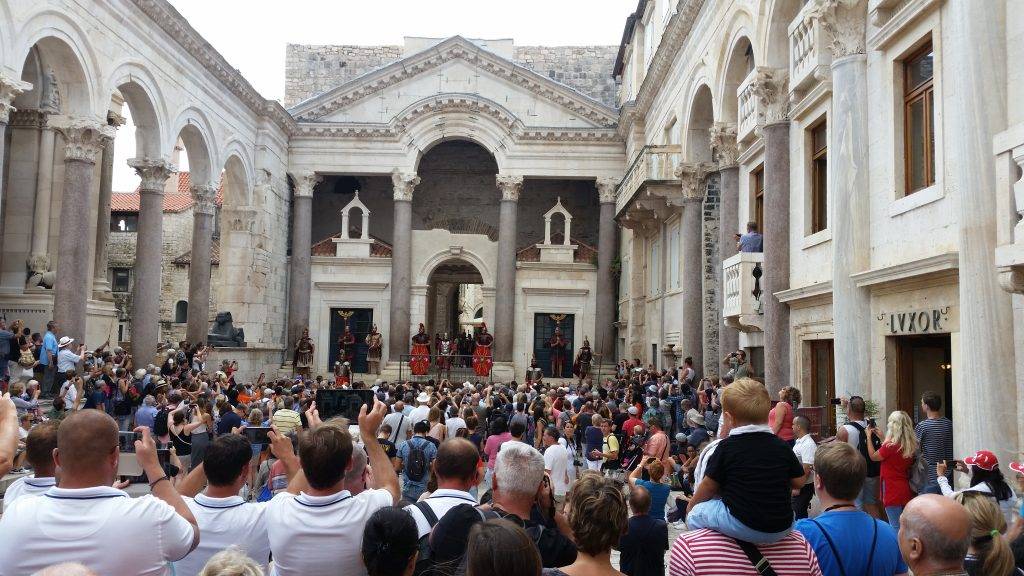
Who built the Diocletian’s Palace and why?
Roman emperor Diocletian built this palace between 295 A.D. and 305 A.D. Diocletian was one of the most successful roman rulers. He ascended the throne of Rome in 284 A.D. and ruled the empire for 21 years. 10 years before he abdicated (which was really rare for the Roman Empire), construction works on his palace in Split began. Diocletian selected a very nice location, in a beautiful scenic bay between Marjan and Gripe hills.
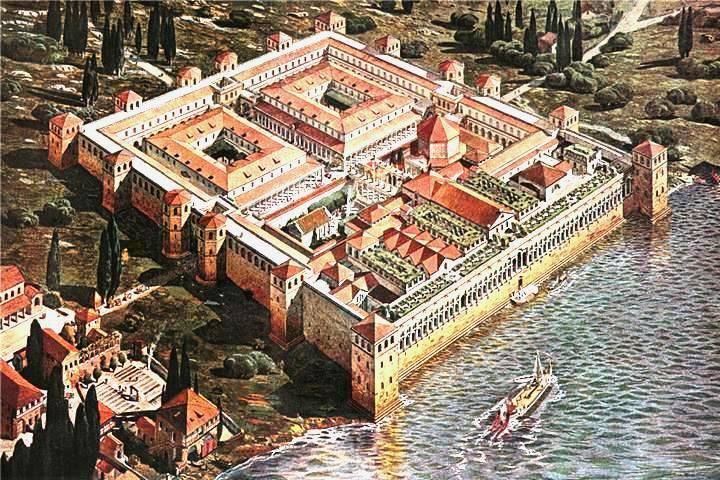
Why did he build it right here, in the roman province of Dalmatia?
As a ruler of the world he could have built it anywhere in his empire. Here is the answer to this question: Emperor Diocletian was a local who was born in Salona. Salona was the capital of the roman province of Dalmatia. Ruins of Salona are still visible and they are located 5 km north of Diocletian’s Palace. I guess he knew he was gonna retire in his home country, not far from his hometown!
Diocletian was actually a son of a scribe, whose actual name was Diokles. Throughout the military ranks he became a roman general and consequently in 284 A.D. he became a roman emperor after murdering roman prefect Aper. I will write more about Diocletian’s life in the future blog posts, since it is really interesting.
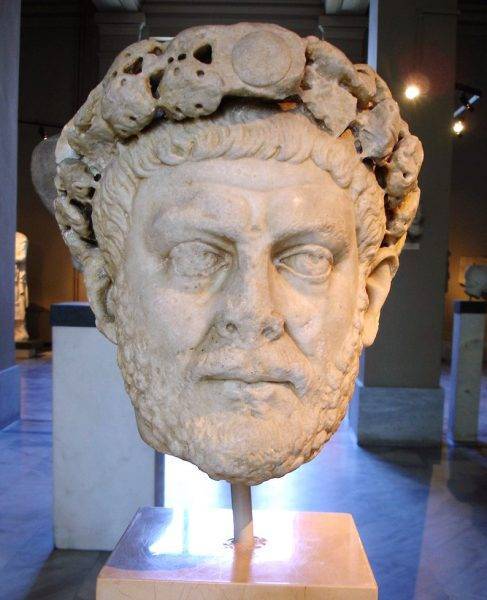
Although Diocletian stabilized the late Roman Empire, today he is mostly being remembered as one of the worst persecutors of Christians.
How long did the construction work on the palace last and who worked on it?
Construction work on the palace lasted for 10 years (between 295 A.D. and 305 A.D.). Mostly local craftsmen and workers were building it. However, in the palace we have established that two Greek stone masons carved in their names above the north gate. Their names were Zotikos and Filotas. Right next to their names they carved a symbol of fish. Greek word for fish is Ichthys. Therefore we think these masons were Christians.

Letters of this word are in old Greek language first letters of following words: Jesus, Chris, Son of, God, Savior. Although Diocletian prosecuted Christians at that time, these people were still not afraid to express their belonging to the Christian community.
What building material was used for construction purposes of the palace?
Mostly, huge limestone blocks from the neighboring island of Brač were used for construction purposes. Also, a lot of marble and granite were found in the palace. Huge granite columns on the Peristyle square came from Egypt (Diocletian sacked Egypt in a war 297 – 298 A.D.). Also, 12 sphinxes were brought from Egypt to the palace as well. Marble in the palace came from Greece and Italy since there were no marble quarries in this part of Europe at that time.
Ground plan of the palace
Indeed, this palace doesn’t look like the palaces of other roman emperors. Unlike this palace, palaces of the most of roman emperors were designed as villas. They were mostly in the countryside, taking huge buffer zones (like Hadrian’s Villa in Tivoli for instance). This property is much smaller and different. In spite of that, Diocletian’s Palace is wonderful and very unique.
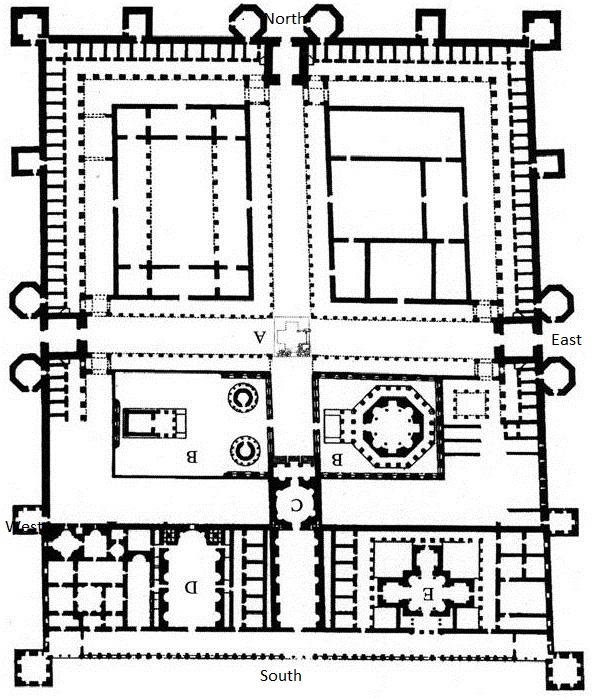
Here we see that Diocletian built the palace in a rectangular shape. Walls on the east and the west side were approximately 215 meters long. Walls on the north and the south side were about 180 meters wide. Size of the palace was 30000 square meters (8 acres). This palace is unique since it is a combination of a villa and roman military camp.
The function of the palace
This palace was actually heavily fortified. It had only two streets (Cardo and Decumanus). Cardo was extended from the north gate to the central square of the palace. Decumanus was a connection between east and the west gate. This was also a roster of the streets of a typical roman military camp. Limestone walls of the palace were in most cases 3 meters wide. 16 roman towers provided maximum safety for the emperor. Romans placed massive octagonal towers to protect the palace gates. They built a square shaped tower on each corner of the palace, and rectangular shaped towers in the middle of each wall.
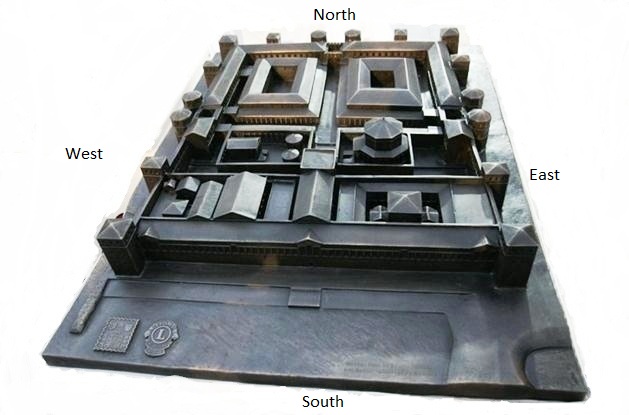
This building had 4 gates. Gate on the south side was the sea gate, and other 3 gates were the land gates. Palace had only one square in the middle – Peristyle Square. This square was a center of roman religion in the palace.
Romans called the north side of the palace “quartaria militaria” because of two military barracks they built there. Hence, we can see them at the upper part of this bronze model of the palace. There lived roman soldiers and guards that protected the palace. South facade of the palace (with the sea gate) was built right next to the Adriatic sea. With this in mind it is logical to conclude that Diocletian’s residence was right there. Consequently, here we have a confirmation of the dual function of the palace. It was a fortified roman villa that was enabling maximum safety for the retired emperor Diocletian. After all, he abdicated and entered this palace on the 1st of May in 305 A.D.
Diocletian’s residence on the south side of the palace
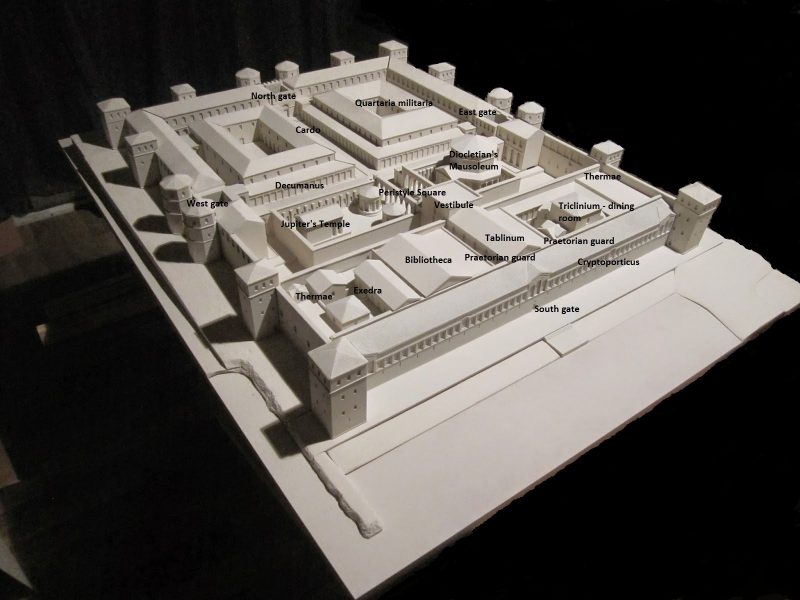
Here we see another model of Diocletian’s Palace. As I said earlier, Diocletian’s residence was on the south side of the palace. On this model we see the location of his living quarters (exedra). Right next to exedra we see his private baths (thermae). Here were also areas where his servants and slaves lived as well. On the right hand side of exedra we see bibliotheca (library). On the south east corner of the palace were public baths and trinclinium (dining area).
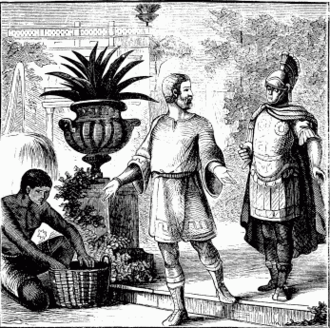
Cryptoporticus was Diocletian’s private promenade, a place where he could enjoy unobstructed view of the Adriatic sea.
Living areas for praetorian guard were on the left and right hand side of tablinum (reception room – area where Diocletian was meeting important visitors). Attached to tablinum, we have Vestibule (waiting area).
Peristyle square and its function
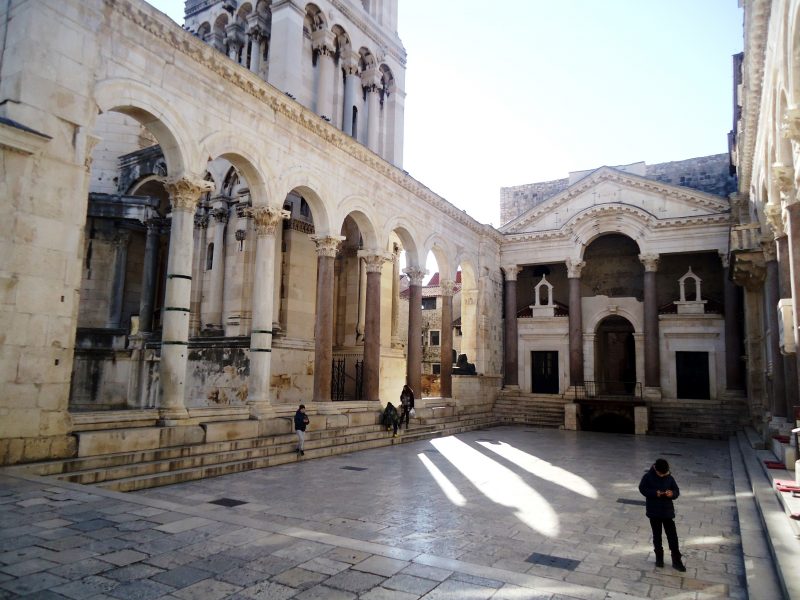
This imperial square, known as Peristyle square (in the picture above), was a center of roman religion in the palace. Romans believed that Diocletian was demigod and therefore they adored him on that square. Therefore, on the east side of it we still today see Diocletian’s mausoleum (his burial place).
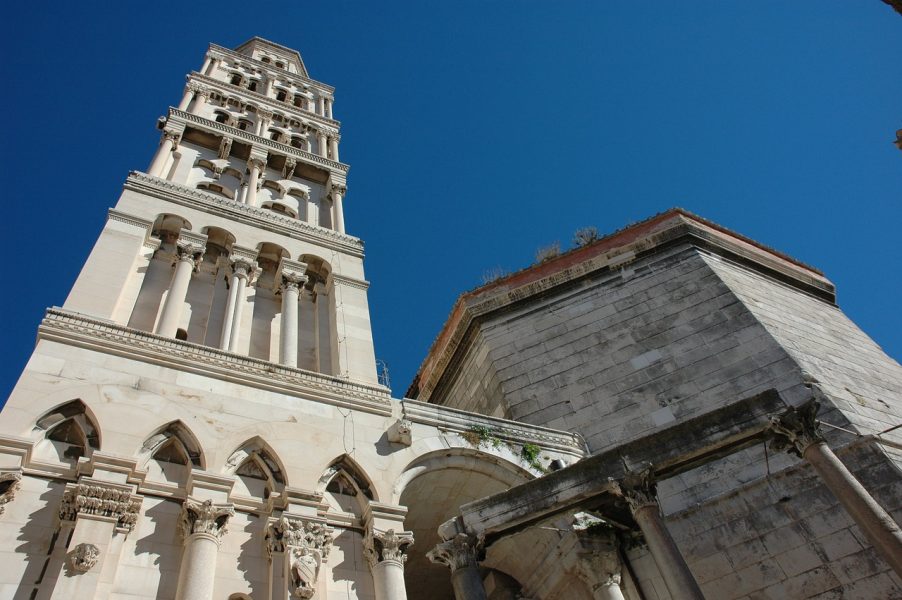
Jupiter’s temple
At the same time , on the west side of the square was Jupiter’s temple (see below). It was aligned with the mausoleum where Diocletian’s burial site was. Of course, Romans did it because of the common belief that Diocletian was Jupiter’s representative on Earth. Because of that, Romans called him Iovius (little Jupiter). Together with the mausoleum, Jupiter’s temple was a place of worship.
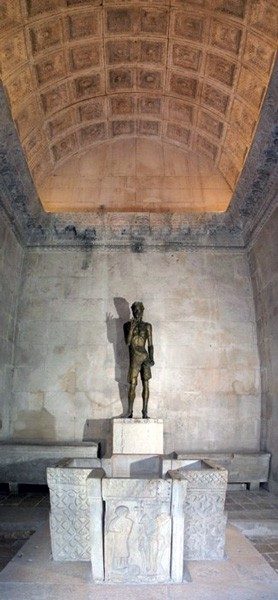
Finally, we conclude that everything was setup for a pleasant retirement of this important roman ruler. Diocletian entered this palace on the 1st of May in 305 A.D. and lived in it until 313 A.D.
End of roman era and birth of a town
After Diocletian died, he was buried in his mausoleum in the palace. Later in the antiquity, some other roman emperors used this palace since they regarded it as a property of the roman government. Even the last legal roman emperor (of the west roman empire) Julius Nepos ended his life in this palace in 480 A.D. Consequently, after he died, West Roman Empire collapsed.
Although the West Roman Empire collapsed, life in the palace continued. Byzantines took over and controlled it. They also regarded this palace as a property of the government. So, Byzantine emperor regarded it as his own property.
In 641 A.D. Salona – roman capital of the province of Dalmatia, was destroyed by the Avars and Slavs. Citizens that survived the fall of town consequetly fled to Diocletian’s Palace, looking for shelter.
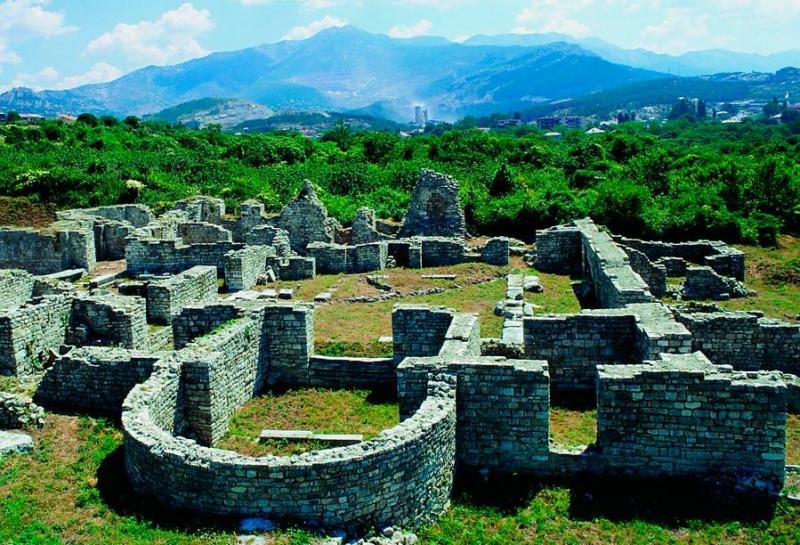
Byzantine guards opened palace gates to the refugees. Barbarians couldn’t breach the walls of mighty Diocletian’s structure. That was a pivot moment in the history of the town. At that time, Diocletian’s Palace evolved into medieval town, called Spalatum (later Split).
What’s being left of the palace today?
Actually, a lot! Many changes happened in Diocletian’s Palace in Split since it became a town. Citizens of Split were doing changes, knocking down roman structures and building their own houses. However, this roman imperial property is still in a good shape!
Here is a picture of Split today. In the middle of it we notice Diocletian’s Palace. In front of it we see today’s port of Split.
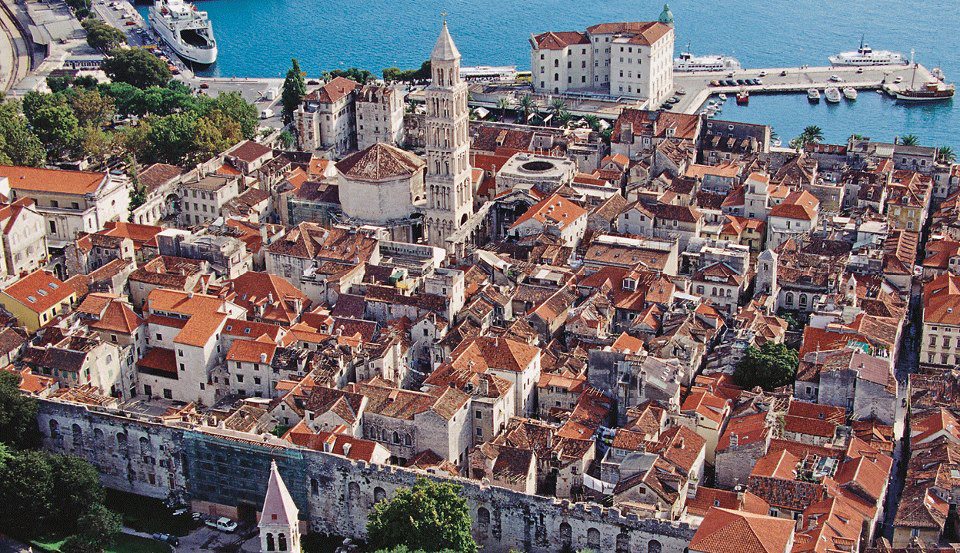
FAQ
Is Diocletian's Palace free?
Yes. You don’t have to pay the admission to enter Diocletian’s Palace. However, you need to pay the admission for some sites in the palace (Cathedral, Jupiter’s Temple, Substructures of the Palace, St. Martin’s church).
What was Diocletian's Palace used for?
Diocletian’s Palace was a residential villa built for the retirement of the roman emperor Diocletian. It was actually a combination of the palace and the roman military camp. Today, this palace is the best preserved palace from the late Roman antiquity.
How old is Diocletian's Palace?
Diocletian’s Palace is 1700 years old. It evolved into a medieval town of Split around 641 A.D. Here is a full article about it.
How was Diocletian's Palace built?
Can I enter Diocletian's Mausolem in Split?
Yes you can! Diocletian’s Mausoleum is a cathedral today. You can either purchase a 5 Euro ticket and enter it yourself, or you can book a tour that goes inside the Mausoleum.
Once you get to Croatia, don’t hesitate, come and visit this magnificent place! Also, I promise you to write another post as soon as possible. This post will be about 10 must see places in Diocletian’s Palace! As much as this is an intro to the exploration of Split, I still recommend to you to take a guided tour that will reveal some other secrets of this magnificent place. If you have some questions – please feel free to drop them in the comments section.
I hope you have enjoyed this article, until the next time!
